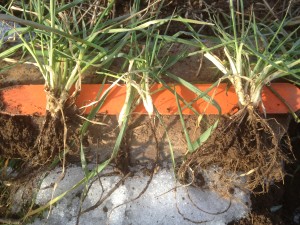by Dr. Calvin Trostle, Extension Agronomy, Lubbock, (806) 746-6101, ctrostle@ag.tamu.edu;
Dr. Clark Neely, State Small Grains Specialist, College Station, (979) 862-1412, cneely@ag.tamu.edu
What impact would 8-15” snow have on Texas wheat conditions in the High Plains and northern Rolling Plains? Several factors may contribute to current wheat conditions, including how well wheat was established. However, remember first that wheat and other grasses like rye and triticale are cool-season grasses. Popular wheat varieties planted in the Texas High Plains like Winterhawk, Hatcher, and TAMs 111, 112, & 113 are also well adapted several hundred miles to the north, for example, in northwest Kansas.
Temperatures were actually not that cold for wheat, perhaps to about 10°F in some of the Texas Panhandle. These same varieties will experience significant sub-zero weather in northwest Kansas, often for several days.
A more likely concern for some growers, whether early planted wheat for grazing or later-planted wheat for grain, is the status of winter adaptation of the current crop. It was in the mid-50s and low 60s for several days before the cold, wind, and snow started on December 26th across the region. So the abrupt change in temperature and the snow might be a potential ‘shock’ to regional wheat. This could lead to some leaf burn or desiccation of the foliage and ultimately some brown or dead leaves (Fig. 1).
However, let’s go back the other direction toward favorable conditions for wheat survival and continued growth: soil temperatures were relatively warm. Those same warmer days before Christmas kept soil temperatures a few inches deep in the soil even in the low 50s. And for wheat this is favorable as the growing point for most fields is around 1” deep in the soil (Fig. 2), perhaps a little deeper. Furthermore, moist soils—present in virtually all of the region—mitigate the potential impact of cold temperatures on wheat. Yes, cold temperatures can damage the foliage, but the growing point is below ground though cold temperatures when soils are relatively dry do have a higher potential for wheat injury.
Dr. Jackie Rudd, Texas A&M AgriLife Research breeder, Amarillo, believes the sudden cold and wind of November 12-13, 2014 was far more injurious to the region’s wheat crop last cropping season. Back then, for much of the Texas High Plains south of Amarillo, area wheat had not yet experienced a freeze, so the potential for tissue and even growing point damage was greater due to the sudden, pronounced, and prolonged impact of that November change of weather. Meanwhile our 2015-2016 wheat crop had already experienced several light and even moderate freezes.
What about late planted wheat only recently emerged or yet to do so?
Some late-planted wheat in the region was only recently emerged before the storm, and I estimate the Lubbock region may have had as much as 100,000 acres of wheat remaining to be planted the first week of December. Dr. Jourdan Bell, AgriLife Extension agronomist, Amarillo, notes that some Panhandle wheat planted in late November with only 1-2 emerged leaves appears to have some light winter kill after the storm. But for the most part she reports central Panhandle wheat fared well after the Dec. 26-27 storm. Most Panhandle wheat had already experienced some winter weather, and the Panhandle has received very good fall moisture so the Sep. – Oct. planted wheat was in very good condition going into the storm.
The Texas South Plains has wheat acreage that is more likely not yet emerged. Obviously cool conditions will slow emergence and growth. But as noted above, soil temperatures were warmer than normal so there is no reason to believe this wheat is injured. And like the recently emerged wheat Dr. Bell noted above, the growing point is below the soil surface so even if existing leaves were damaged, new growth will appear soon.
Will the cold and snow affect wheat diseases levels?
Dr. Ron French, AgriLife Extension plant pathologist, Amarillo, has few if any concerns related to the December cold and heavy snow. There should be no major cold impacts on wheat plant health due to disease, as virus and fungal diseases (and bacterial for that matter) are not active when temperatures are still cold. He does not expect the first significant sightings or detections of foliar diseases on wheat, triticale, rye until at least mid-March in the Texas High Plains. In a cold year, rusts may even disappear if we get an extended sub-freezing spell.
Lower wheat leaves (which are older anyway and may senesce some) may yellow and show some secondary rots due to them being in touch with soil and very moist. Possible root rots will also be “dormant” until weather is good for root growth, which also means it is good for the fungus.
Finally, Dr. French reminds growers that in a wet year, we need to be on the watch for foliar diseases such as leaf and strip rusts, as well as root rots.

Fig. 1. Some foliage has desiccated (died) due to leaf burn from strong, cold winds Dec. 26-27 in the Texas High Plains. Plant survival and continued growth is not affected.

Fig. 2. Wheat growing point at the base of the crown is about 1” below the soil surface (represented by top of orange stake, which is 1” wide). Notice the white portion of lower stems, which were below ground. This depth of growing point protects wheat from permanent injury. Continued growth of these plants will be normal.